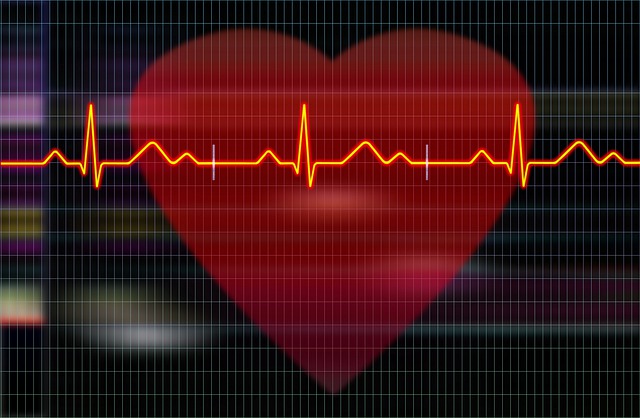
Update focusing on ESC guidelines on heart failure
A targeted update to the European Society of Cardiology (ESC) heart failure guidelines was published online in the European Heart Journal following the results of major new trials that should change the treatment of heart failure patients.
"Heart failure is a fast-moving area of research and exciting new trials are expanding treatment options for patients," said Professor Theresa McDonagh, Chair of the Guidelines Working Group, King’s College Hospital, London. United Kingdom. "This focused update incorporates the latest evidence-based treatments into next-generation management recommendations with the goal of improving outcomes for patients with heart failure."
Ejection fraction, the proportion of blood ejected when the heart pumps, is a measure of heart function used to categorize types of chronic heart failure. Acute heart failure is life-threatening and requires urgent treatment; It may be the first manifestation of heart failure, but is most often due to an acute deterioration of chronic heart failure.
Chair of the guidelines working group, Professor Marco Metra from the University of Brescia, Italy, said: “In 2021, the ESC published Guidelines for the diagnosis and treatment of acute and chronic heart failure. Since then, more than 10 randomized controlled trials have been published that should change patient management before the next scheduled comprehensive guideline, requiring a specific update. New recommendations are provided in three areas: chronic heart failure, acute heart failure, and comorbidities.”
Regarding chronic heart failure, there were no recommendations in the 2021 Guidelines on the use of sodium-glucose cotransporter 2 (SGLT2) inhibitors in patients with heart failure with mildly reduced ejection fraction (HFmrEF) and heart failure with of preserved ejection (HFpEF) since no trials had been carried out in these groups. Since then, the EMPEROR-Preserved and DELIVER trials were conducted with the SGLT2 inhibitors empagliflozin and dapagliflozin , respectively. The focused update recommends an SGLT2 inhibitor (dapagliflozin or empagliflozin) in patients with HFmrEF and HFpEF to reduce the risk of hospitalization for heart failure or cardiovascular death.
The 2021 Guidelines emphasized the importance of pre-discharge assessment and early post-discharge assessment in patients admitted to the hospital for an episode of acute heart failure. Subsequently, the STRONG-HF trial demonstrated the safety and efficacy of initiating oral medical treatment and achieving optimal doses before hospital discharge and at the first post-discharge follow-up visits. Based on these results, the focused update recommends an intensive strategy of rapid initiation and escalation of evidence-based treatment before discharge and during frequent and careful follow-up visits in the first six weeks after hospitalization for heart failure to reduce readmission. and mortality.
Preamble
The guidelines evaluate and summarize the available evidence with the aim of helping healthcare professionals propose the best diagnostic or therapeutic approach for an individual patient with a given condition. The guidelines are intended for healthcare professionals and are made available free of charge by the European Society of Cardiology (ESC).
The ESC guidelines do not override the individual responsibility of healthcare professionals to make appropriate and accurate decisions taking into account each patient’s health condition and in consultation with that patient or their caregiver when appropriate and/or necessary. It is also the responsibility of the health professional to verify the rules and regulations applicable in each country to medicines and devices at the time of their prescription and, where appropriate, to respect the ethical standards of their profession.
The update emphasizes that, during follow-up appointments, special attention should be paid to symptoms and signs of congestion, blood pressure, heart rate, plasma NT-proBNP concentrations, potassium concentrations, and estimated glomerular filtration rate (eGFR, a indicator of kidney function). function). These factors are related to prognosis and may indicate the need for further changes in treatment.
Regarding comorbidities , the focused update offers two new recommendations for the prevention of heart failure in patients with chronic kidney disease and type 2 diabetes.
- Based on results from the DAPA-CKD and EMPA-KIDNEY trials, and a meta-analysis of four trials, the focused update recommends SGLT2 inhibitors for patients with chronic kidney disease and type 2 diabetes to reduce the risk of hospitalization for heart failure or cardiovascular disease and death.
- The second recommendation follows the FIDELIO-DKD and FIGARO-DKD trials and a joint analysis of the two studies. The focused update recommends mineralocorticoid receptor antagonist finerenone for patients with type 2 diabetes mellitus and chronic kidney disease to reduce the risk of hospitalization for heart failure.
The second comorbidity addressed in the focused update is iron deficiency . Results from new trials, including IRONMAN, as well as meta-analyses, have led to new recommendations in the specific update. Intravenous iron supplementation is currently recommended in iron-deficient patients with heart failure with reduced ejection fraction (HFrEF) or HFmrEF to improve symptoms and quality of life, and should be considered to reduce the risk of hospitalization for heart failure.
*Download the full text of the 2023 guide in English by clicking here.
















